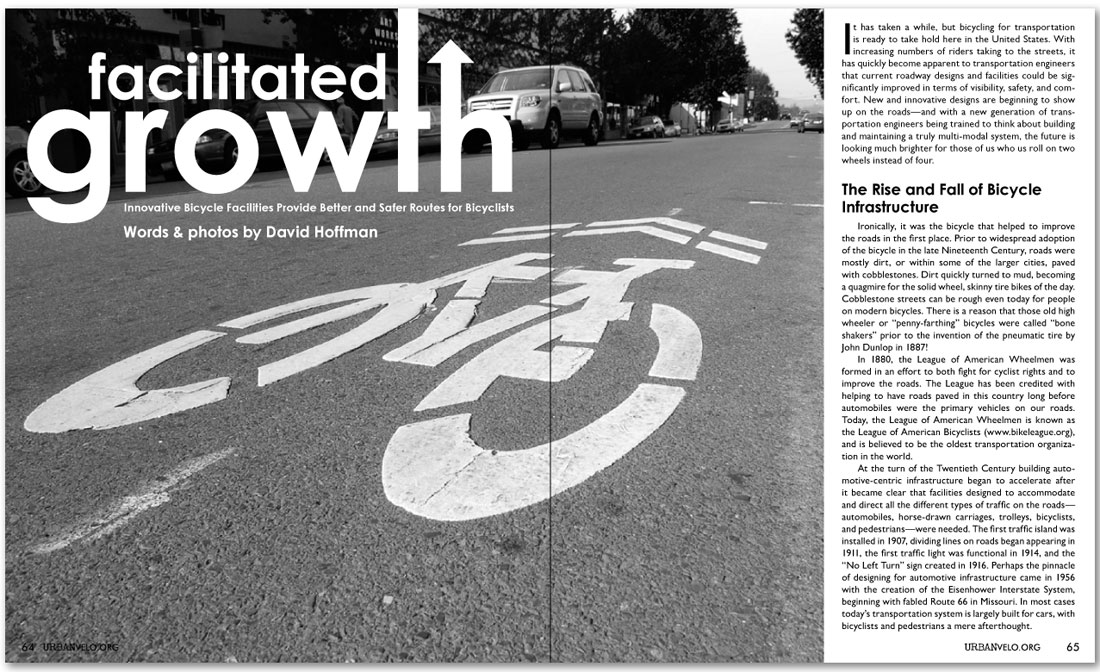It has taken a while, but bicycling for transportation is ready to take hold here in the United States. With increasing numbers of riders taking to the streets, it has quickly become apparent to transportation engineers that current roadway designs and facilities could be significantly improved in terms of visibility, safety, and comfort. New and innovative designs are beginning to show up on the roads—and with a new generation of transportation engineers being trained to think about building and maintaining a truly multi-modal system, the future is looking much brighter for those of us who us roll on two wheels instead of four.
The Rise and Fall of Bicycle Infrastructure
Ironically, it was the bicycle that helped to improve the roads in the first place. Prior to widespread adoption of the bicycle in the late Nineteenth Century, roads were mostly dirt, or within some of the larger cities, paved with cobblestones. Dirt quickly turned to mud, becoming a quagmire for the solid wheel, skinny tire bikes of the day. Cobblestone streets can be rough even today for people on modern bicycles. There is a reason that those old high wheeler or “penny-farthing” bicycles were called “bone shakers” prior to the invention of the pneumatic tire by John Dunlop in 1887!
In 1880, the League of American Wheelmen was formed in an effort to both fight for cyclist rights and to improve the roads. The League has been credited with helping to have roads paved in this country long before automobiles were the primary vehicles on our roads. Today, the League of American Wheelmen is known as the League of American Bicyclists (www.bikeleague.org), and is believed to be the oldest transportation organization in the world.
At the turn of the Twentieth Century building automotive-centric infrastructure began to accelerate after it became clear that facilities designed to accommodate and direct all the different types of traffic on the roads— automobiles, horse-drawn carriages, trolleys, bicyclists, and pedestrians—were needed. The first traffic island was installed in 1907, dividing lines on roads began appearing in 1911, the first traffic light was functional in 1914, and the “No Left Turn” sign created in 1916. Perhaps the pinnacle of designing for automotive infrastructure came in 1956 with the creation of the Eisenhower Interstate System, beginning with fabled Route 66 in Missouri. In most cases today’s transportation system is largely built for cars, with bicyclists and pedestrians a mere afterthought.
